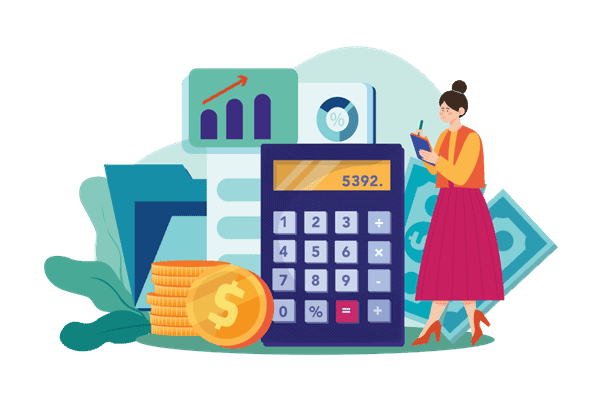What is Depreciation
Depreciation is a known a method of accounting that spreads the expense of a tangible or physical item over its useful life. Depreciation represents how much of an asset’s value has been depleted over time. Companies depreciate assets for tax and accounting reasons, and there are numerous strategies to select from.
It is the process of subtracting the whole cost of an expensive item purchased for your firm. However, you deduct portions of it over time instead of doing it all in one tax year. When you depreciate assets, you may control how much money is written off each year, giving you more financial control.
For accounting and tax purposes, depreciation helps businesses stretch the expense of physical assets over several years. There are multiple types of depreciation procedures, including straight-line and accelerated depreciation. Some accounting methods for depreciation require the company to estimate the asset’s “salvage value” at the end of its useful life.
Depreciation is frequently misinterpreted as a phrase for anything merely losing value or as a tax calculation. Depreciation is a crucial aspect of your company’s tax filings, but it is a complex topic to grasp.
How to calculate depreciation
There are three primary depreciation methods that anyone learning how to calculate depreciation should be familiar with.
- Useful life is the amount of time an asset is deemed productive. Using the asset after its useful life has expired is no longer cost-effective.
- Salvage value – After the asset’s useful life has ended, you may sell it at a lower price. This is referred to as the asset’s salvage value.
- Asset cost – The total asset cost, including taxes, setup fees, and shipping.
What assets are depreciable?
The IRS has precise rules on which assets can be depreciated for accounting purposes, with the following criteria.
- You have to own it
- You need to use it in your business
- You are able to determine its useful life
- You expect it to last more than one year
Vehicles, buildings, office equipment and other electronics, machinery, and equipment, and certain intangible objects, such as patents, copyrights, and computer software, are some of the most frequent categories of depreciable assets.
Types of Depreciation
There are numerous methods for depreciating assets for your books or financial statements; however, the depreciation expense on your financial statements may differ from what you deduct on your tax return. As a result, some small businesses use one technique for accounting and another for taxes. In contrast, others prefer to keep things simple by adopting the tax method of depreciation for accounting.
1. Straight-Line
The straight-line approach is the most fundamental method for recording depreciation. It records an identical depreciation expense each year for the asset’s entire usable life until it is depreciated down to its salvage value.
The straight-line technique calculates annual depreciation by dividing the depreciable amount by the total number of years. Straight-line depreciation is simple to use, produces few errors, and allows business owners to expense the same amount every accounting period.
2. Declining Balance
The declining balance technique is accelerated depreciation that starts with the asset’s book value rather than salvage value. Because an asset’s carrying value is higher in earlier years (before it has begun to depreciate), the same percentage results in a higher depreciation expenditure amount in earlier years, which decreases each year after that.
3. Double-declining depreciation
This strategy, also known as falling balance depreciation, let you to write off more of an asset’s worth immediately after purchase and less over time. It is an excellent alternative for firms wishing to recoup a larger portion of the asset’s worth right away rather than waiting a predetermined number of years, such as young businesses with high startup costs and needing extra cash. It is especially important when assets are spent quickly in the first few years.
4. The sum of the years’ digits depreciation
Accelerated depreciation is also possible with the sum-of-the-years digits (SYD) technique. To begin, add all the numbers of the asset’s projected life.
The sum of the years’ digits also known as (SYD) depreciation is an accelerated computation comparable to the double-declining approach. SYD estimates a weighted percentage depending on the asset’s remaining useful life rather than lowering the book value.
Depreciation helps firms spread the expense of physical assets over time, which can benefit both accounting and tax. Businesses can also choose from various depreciation techniques, allowing them to select the best suits their needs.


Recent Comments